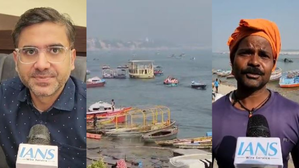Rajasthan News Desk !!! ‘Chhappaniya Akal’ is the most terrible famine in the history of Rajasthan or Thar which occurred in the year 1898, due to Vikram Samvat 1956, it is also called ‘Chhappaniya Akal’. The world knows this famine as ‘The Great Indian Famine 1899’. It is believed that in this famine, one million people of Rajasthan died due to hunger.
Even today, the horror of this famine is described in folk songs and folk life. According to an estimate published in the Imperial Gazetteer of India in 1908, 10 lakh people died of starvation and related diseases in British India alone, i.e., in the territories directly ruled by the British government. Some historians believe that this figure had reached about 25 percent of the total population of Rajasthan, i.e. 40 to 45 lakhs. This does not include the number of casualties caused by this famine in the princely states and kingdoms of that time. So let us know the story of the Chappaniya famine, the most painful period in history, in today’s video.
Thar located in Rajasthan is the 17th largest desert in the world and the 9th largest hot desert in the world. This is the area of Rajasthan which nature does not like much. There is hardly any rainfall in the entire desert, on the other hand there is not a single river for water here. Due to this reason, this entire area is completely dependent on rain for its water needs. Historically, Rajasthan has been facing semi-drought drought every third year and severe drought every eighth year, but Chappaniya had come after making the clouds swear not to rain. Chappaniya broke the back of both Rajasthan and its people to such an extent that the people here were forced to eat the food of cattle.
The Chappania famine began with the failure of the summer monsoon of 1899 in western and central India, which brought unbearable suffering to the lives of more than 60 million people over an area of 476,000 square miles in the following year. Initially, the effects of this terrible famine were felt in central and northern India, including the Bombay Presidency, the minor province of Ajmer-Merwara and the Hissar district of Punjab. However, the princely states of Rajasthan were the most affected by this famine. This famine caused the most devastation in areas like Nagaur, Marwar, Mewar, Kathiawar, Jodhpur, Bikaner, Barmer and Jaisalmer of Rajasthan. Due to the drought, there was a severe shortage of food and water in Rajasthan, which ruined the inter-regional trade of the princely states. As a result, the mortality rate due to hunger increased significantly.
In the year 1899, the average rainfall in many parts of North India had reduced from 45 inches to just 11 inches. During this time, not even a drop of rain fell in most parts of Rajasthan throughout the year. Due to lack of rain in Rajasthan, which is dependent on rainy season farming, farmers could not even sow their crops. Due to which neither a single grain of grain was produced, nor fodder was available for animals. In the areas which depended on rainwater storage for drinking water, people started migrating due to acute shortage of drinking water. The period of starvation reached such a level that people started stealing grains and water from their homes. You can understand the pain of its devastation from the fact that in that period people were forced to sell even their wives and children in exchange for grains. This heart-wrenching painful scene was spread in every corner of Rajasthan.
During the famine, on one hand people were dying due to dehydration due to lack of drinking water, while on the other hand people and animals were dying on the way due to hunger and thirst in the desert’s temperature of 50-52 degrees Celsius. People dying slowly due to the devastation of the famine were forced to eat bread made of grass, hunted snakes and mongooses and grinded dry bark of trees. The condition of starvation was such that some people had even become cannibals due to hunger.
The devastation of the Chappaniya famine was so terrible that every bone of the people’s bodies could be clearly seen due to hunger and lack of water. People had become so weak that they needed support to walk, even to stand, for this, pegs were buried in almost every house. In Rajasthan, burying pegs means burying a long stick in the ground, with the support of which people can stand, walk and do their daily work. When there was a shortage of grains, people were forced to eat food on alternate days, but this devastation did not stop here. The situation became so bad that people were forced to eat the seeds of Kakadiya-Matira in hunger, when they also got exhausted, they ate the bark of trees, when they also got exhausted due to drought, people started eating berries, vegetation and bushes. There came a time when all these also got exhausted in the area around the people for miles. After this, people were forced to make powder of the remaining seeds of plum and eat it with water. When every route was closed for the people, they started boiling the dried grass and eating it. The darkness of famine was so deep on the people that the blood of the people slowly dried up due to lack of food and water.
Not only the common people but also the kings of Rajputana were struggling with this famine. Many kings of Rajputana did many famine relief works to save the people from this terrible tragedy, in which the arrangement of free food was the most important. Along with this, the princely states opened shelters at various places for the people so that hungry people could save their lives by eating food there. However, due to limited means of transportation and lack of communication means, help could not reach the people completely. Due to this system, the treasury of many rulers of Rajputana became empty and they drowned in heavy debt. During that time, relief camps were opened in the states under the British government to provide relief to the people affected by the famine, but even there people got limited relief, which was almost negligible.
Finally, one day nature also had to bow down to the courage of the people of Marudhara, and after a long time, monsoon arrived in the month of Jeth. As soon as the clouds started rumbling in Marudhara, the eyes of some people were filled with joy at the end of a long tragedy, while some people’s eyes filled with tears remembering the deeds that happened or were done by them during this period. Our ancestors faced the horrors of these famines year after year with unmatched courage and intelligence and managed the boat of life of themselves and their family members with great care during the period of crisis. It is impossible for those watching this video sitting in AC rooms today to even imagine how much pain our elders suffered. But this famine caused serious damage to the social and economic condition of our ancestors. Due to which casteism got a lot of boost in the society. During this famine, many artisans and weaver castes left their craft due to starvation and got completely drowned in debt and later turned into bonded laborers. Among these castes, the Balai weaver caste was also one, whose social status also deteriorated drastically. Thousands of people from Rajasthan migrated to Malwa and other places.
Learning from this terrible famine, the kings and Maharajas of Rajasthan, the British government and the common people made many such arrangements so that they and their future generations do not have to face such pain in the future. After recovering from this famine, the people of Rajasthan seemed to have the courage to face any famine or natural disaster in the world. Due to this terrible famine, many people of Rajasthan left their homes and families and settled in different parts of India. These people showed such a brilliance of hard work and dedication that they became known as Marwaris all over India. Many canals, reservoirs and buildings were constructed so that people do not have to face the pain of famine in the future. And plans were made for the future which included promotion of food grain production, import of red wheat from America, distribution of red jwar, red gehun, ghat etc. through permit, initiation of green revolution, changes in Indian agricultural system and quality of seeds used for sowing, expansion of road and rail transport facilities along with keeping surplus in godowns for storing grains.
So this was the story of Chappaniya Famine, thanks for watching the video, if you liked this video then please give your opinion by commenting, subscribe to the channel, like the video, and share it with your friends and family.


